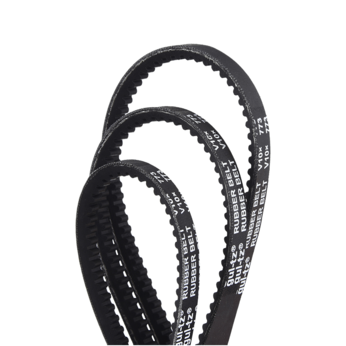What are the requirements for the storage environment of ribbed belt
Ribbed belt plays a vital role in industrial applications, and its performance is affected by a variety of external environmental factors. It is crucial to understand and control these environmental conditions when storing and using the Ribbed Belt to ensure its long-term stability and reliability.
Temperature is one of the key factors affecting the performance of the Ribbed Belt. Ribbed belts are usually made of rubber or synthetic materials, and the physical properties of these materials will change under different temperature conditions. In a high temperature environment, the aging rate of rubber materials will accelerate, showing hardening, cracking and other phenomena, which seriously affect its elasticity and friction characteristics. Therefore, it is recommended to store the Ribbed Belt in a temperature range of 15°C to 25°C, avoiding direct sunlight and high-temperature equipment to slow down the aging process of the material. Although low temperature has relatively little effect on the physical properties of the Ribbed Belt, too low temperature may cause the material flexibility to decrease, thereby increasing the risk of cracks or breaks during use. Therefore, reasonable control of storage temperature is a necessary measure to ensure the performance of the Ribbed Belt.
Humidity is also an important factor affecting the storage environment of the Ribbed Belt. Excessive humidity can cause the surface of the Ribbed Belt to absorb moisture, which in turn affects its friction characteristics and increases the risk of slipping. In addition, a humid environment may also promote the growth of mold, further compromising the integrity of the material. When storing the Ribbed Belt, ensure that the environment remains dry, and the ideal relative humidity should be controlled between 40% and 60%. To this end, equipment such as desiccants or dehumidifiers can be used to reduce the moisture content in the air.
Chemical corrosion is a factor that must be paid special attention to in the storage environment of the Ribbed Belt. Many industrial environments often contain corrosive chemicals such as acids, alkalis or solvents, which may cause material degradation and performance degradation once they come into contact with the Ribbed Belt. Therefore, when storing the Ribbed Belt, ensure that the storage area is away from any corrosive chemicals, and ensure that the surface of the Ribbed Belt is clean before storage to avoid potential damage to the material caused by residual chemicals.
Ultraviolet radiation is also an important environmental factor that affects the performance of the Ribbed Belt. When exposed to sunlight for a long time, the rubber material of the Ribbed Belt will age due to ultraviolet radiation, resulting in a decrease in physical properties, cracks or deformation. Therefore, when storing the Ribbed Belt, choose a cool, dry place and avoid direct sunlight. If it must be stored in the sun, it is recommended to use sunshade items or packaging materials for protection to reduce direct exposure to ultraviolet rays, thereby effectively extending its service life.
Vibration and shock are factors that cannot be ignored in storage conditions. When storing the Ribbed Belt, avoid placing it in areas with frequent vibrations or susceptible to shocks. Vibration and shock may cause the Ribbed Belt to loosen or deform, increasing the risk of its wear. Therefore, choosing a stable and flat surface for storage and avoiding stacking heavy objects on top of it are important measures to ensure the performance of the Ribbed Belt.
Hot Products
-
 View More
View More
-
 View More
View More
V-belt For Industry
-
 View More
View More
T Type Industry Rubber Synchronous Belt
-
 View More
View More
Toothed wedge belt
-
 View More
View More
Thickened timing belt
-
 View More
View More
Open Timing Belt
-
 View More
View More
Automotive V-belt
-
 View More
View More
Rubber Flat Belt
-
 View More
View More
Ribbed Belt
-
 View More
View More
Synchronous Pulley
-
 View More
View More
Arc tooth industrial rubber synchronous belt
-
 View More
View More
Automotive timing belt

 English
English 简体中文
简体中文
